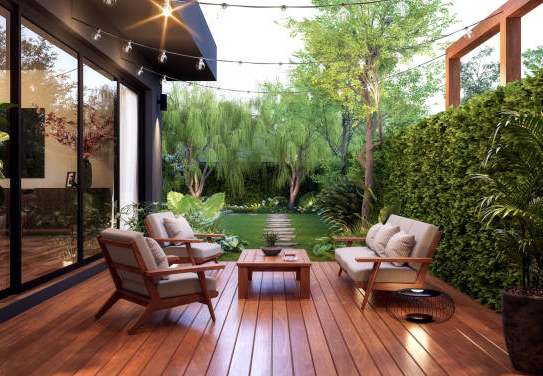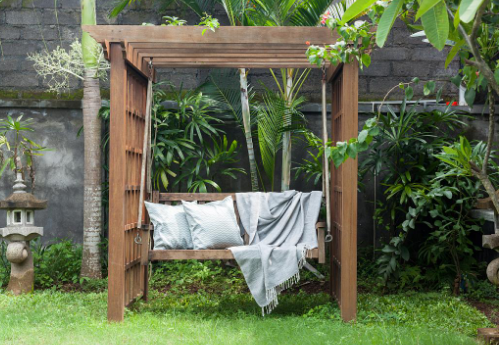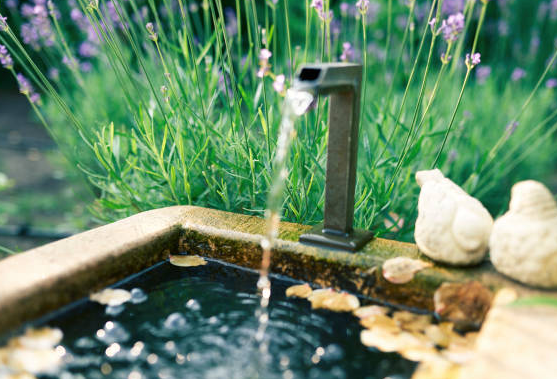A garden is a major highlight of home life. Not only does it provide a space for relaxation and entertainment, but it also brings peace and joy to our hearts. However, maintaining and beautifying a garden is not an easy task. It requires time, energy, and money to keep the garden tidy, comfortable, and appealing. So, are there any tricks to make your garden both beautiful and easy to manage? Here are four simple tips that might help you achieve that.
1. Choose the Right Plants
No matter what style of garden you’re aiming for, plants are an essential element. They add life and color to your garden, as well as fresh air and shade. However, not all plants are suitable for every garden. Some plants may require too much maintenance, others may not adapt well to the local climate and soil, and some may not complement the overall aesthetic of your garden. Therefore, when choosing plants, follow the principle: “Choose the right plants, not the expensive ones.”
-
Choose the right plants: Select plants based on your preferences, needs, and garden conditions. For example, if you like colorful flowers, choose easy-to-manage, year-round bloomers such as roses, peonies, or chrysanthemums. If you prefer a green lawn, opt for durable, drought-resistant, and pest-resistant varieties like Bermuda grass, fescue, or ryegrass. If you enjoy a natural, rustic look, you can choose native plants like bamboo, camellias, or azaleas.
-
Avoid the expensive ones: Stay away from rare or high-maintenance plants. While these plants may look attractive, they often require specialized knowledge and care. They can also be susceptible to pests and climate changes, which might lead to them wilting or dying, ultimately wasting time and money and affecting the overall beauty of your garden.
2. Pay Attention to Ground Covering
Ground covering is a crucial part of garden design. It not only divides the garden into different functional areas but also enhances both practicality and aesthetics. When planning your ground covering, keep these points in mind:
-
Use hardscaping for main areas, and softscaping for accents: Hardscaping involves materials like stone, brick, or concrete. These are durable, easy to clean, and slip-resistant, making them ideal for high-traffic or load-bearing areas like driveways, walkways, or patios. Softscaping involves materials like gravel, mulch, or turf. These are softer, breathable, and more natural, perfect for less-trafficked areas like flower beds, lawns, or resting areas.
-
Choose materials that complement the garden style: The materials and colors you choose will impact the garden’s visual appeal. For example, if your garden has a modern minimalist style, you might go with gray or white marble or granite. For a more rustic country-style garden, consider red or yellow bricks or old stone tiles. If your garden follows an Eastern theme, black or brown slate or treated wood may be better suited.
-
Ensure even ground and good drainage: The ground should be smooth, avoiding any significant unevenness or steep slopes, as this can affect both safety and aesthetics. Drainage is equally important to prevent water accumulation or muddy conditions, which could damage plants and make maintenance difficult.
3. Organize Your Garden into Functional Zones
A garden is a versatile space that can fulfill different needs such as planting, relaxation, entertainment, and dining. To make better use of the space, it’s essential to divide the garden into functional zones. When zoning your garden, keep the following in mind:
-
Define zones based on your needs and preferences: Everyone has different uses for their garden. For instance, if you like growing vegetables or fruit, set aside space for a vegetable or fruit garden. If you enjoy outdoor dining or barbecues, create a designated dining or grilling area. For those who love socializing or playing games, an entertainment or lounging zone would be ideal.
-
Divide based on the space’s size and shape: Larger or rectangular spaces might be divided into a front activity zone and a quieter back zone. Smaller, square gardens could be divided into four sections, each serving a different purpose.
-
Select decor and plants that suit each zone: Each zone should have decor and plants that match its function and style. For example, a vegetable or fruit garden could use practical yet attractive items like flowerpots or fences. A dining or grilling area might be enhanced with comfortable furniture, umbrellas, and lighting. A relaxation zone could include swings, hammocks, or rocking chairs.
4. Add Water Features
Water features are an eye-catching element in any garden. They add movement, vitality, and a refreshing atmosphere. When adding a water feature, here are some things to consider:
-
Choose a water feature that suits your garden’s size and style: There are various types of water features, including fountains, waterfalls, ponds, and streams. Each has its own benefits, so pick one that matches your garden’s size and theme. For a larger, natural-style garden, a pond or stream could complement the space, while smaller, modern gardens might benefit from a fountain or waterfall for a more artistic effect.
-
Consider the location and direction of the water feature: The placement of a water feature affects both its visual impact and sound. If you want the water feature to be the focal point of the garden, place it in the center or a prominent spot. If it’s meant to serve as a background feature, place it in a more subtle location.
-
Plan for maintenance: Water features require ongoing care to keep the water clean and the equipment in working order. Consider how much time you can dedicate to maintenance. For a low-maintenance feature, a small fountain might be sufficient, requiring only periodic water changes. If you’re opting for a larger pond or stream, you may need a filter, a pump system, and regular cleaning to keep it pristine.
These are four simple tips for maintaining and beautifying your garden. Hopefully, this article has provided some inspiration. Of course, there are many other ways to care for and enhance your garden. Feel free to unleash your creativity and imagination to create a garden that is uniquely yours. Wishing you a beautiful, low-maintenance garden!





